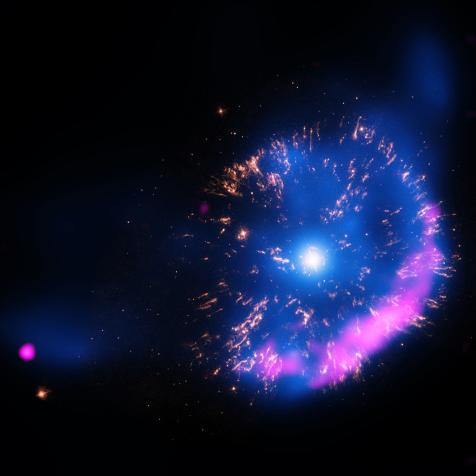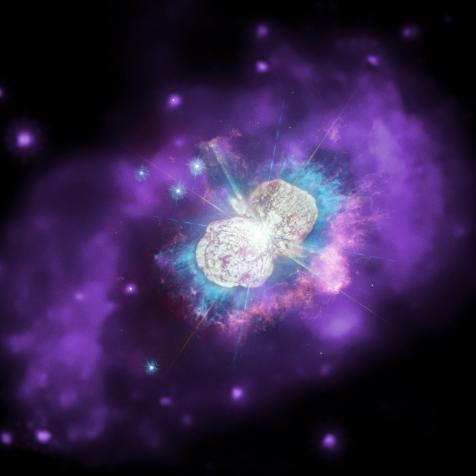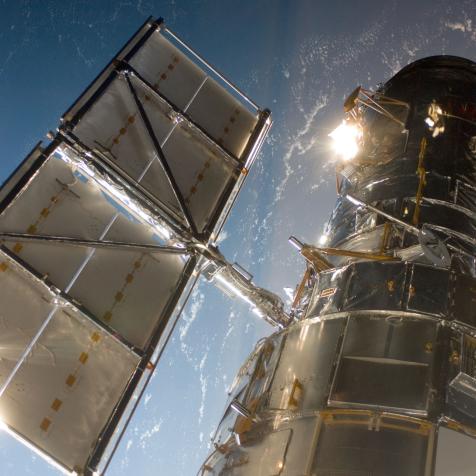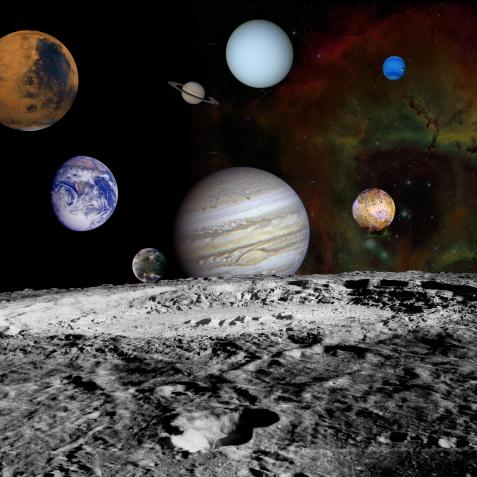
NASA/Chandra X-ray Observatory Center
How to Make a Neutron Star at Home

First, take a bunch of matter. It doesn’t matter what kind – a piece of paper, some leftover gum. Then, press it, and press it, and press it some more. Don’t stop now! We’ve got a long way to go.
Eventually, if you’re really committed to this, you can press your ball of matter into such a tiny volume that all the little chemical bonds are completely shattered, leaving just a bunch of individual atoms smooched together.
Keep going. If you keep pressing, eventually it gets so uncomfortable that electrons leave the atoms and start wandering around – you’ve got yourself an incredibly dense plasma on your hands. It’s probably pretty hot right now too, so I hope you brought your oven mitts.

NASA's Goddard Space Flight Center
A neutron star is the densest object astronomers can observe directly, crushing half a million times Earth's mass into a sphere about 12 miles across, or similar in size to Manhattan Island, as shown in this illustration
Keep going. If you press hard enough, those random electrons will get shoved inside the nuclei in the atoms. There, they can play a little game of nuclear do-see-do, where they combine with protons and turn them into neutrons.
Keep going. If you’ve pressed hard enough, whatever your original starting material was, you now have a tiny ball of almost entirely neutrons smashed together.
Keep going. Eventually, surprisingly enough, you’re going to meet some resistance. Oh, it’s not like this has been easy – you’ve had to fight a lot of forces to get to this point, but this is much stronger than you were expecting. When neutrons cram together too tightly, they can simply refuse to get even closer, a phenomenon that the physicists call “neutron degeneracy pressure.” I won’t get into the details of this degeneracy pressure, suffice to say that it has its origins in the weird wacky world of quantum mechanics, which is the physics of the very, very small (and trust me, your ball of neutrons is incredibly tiny indeed).
Dive Deeper into the Cosmos
Journey Through the Cosmos in an All-New Season of How the Universe Works
The new season premieres March 24 on Science Channel and streams on discovery+.
Congratulations, you’ve made yourself a very small neutron star. Amazingly enough, nature does this all the time. Instead of squeezing gum, however, it happens when giant stars die. When they stop releasing energy in their cores, all that mass (we’re talking 8 or 10 times the mass of the sun) squeezes down, compressing the core and turning it into a neutron star.
Once exposed to space, a neutron star is incredible, incredibly weird. It will have the mass of several suns compressed into a volume no bigger than Manhattan. If you want to leave the surface of a neutron star, you’ll have to travel at over half the speed of light. The gravity is so intense on the surface that the tallest “mountains” are less than an inch tall.

NASA's Goddard Space Flight Center/S. Wiessinger
A rupture in the crust of a highly magnetized neutron star, shown here in an artist's rendering, can trigger high-energy eruptions
And they spin. Man, do they spin. The fastest neutron stars are capable of rotating several thousand times per second – that’s faster than the blender in your kitchen.
Deep inside neutron stars, the forces are so extreme that we basically have no idea what’s going on. It may just be a whole bunch of neutrons, but it also be some exotic – and unknown – form of matter.
Whatever they are…don’t try making them at home.














































































